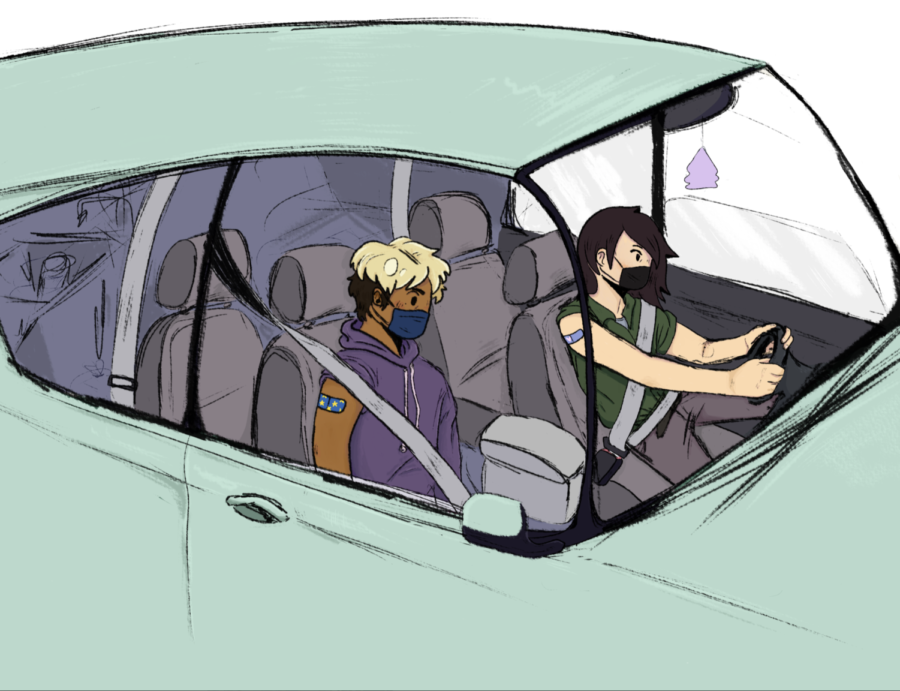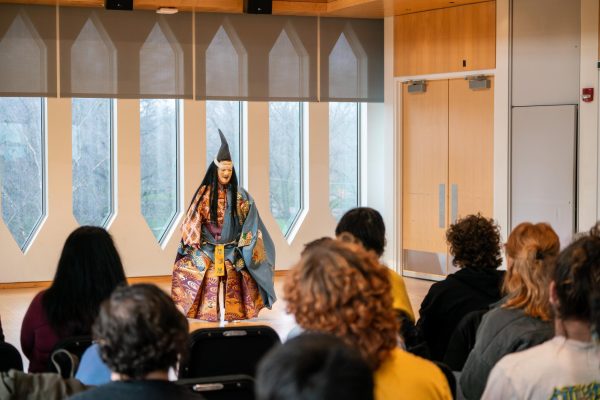Students, Community Members Support One Another in Getting to Vaccination Sites
Students and community members helped each other get to their vaccination appointments in Lorain County and surrounding areas.
After Ohio expanded vaccine availability to anyone over 16 on March 29, all Obies are finally eligible to receive COVID-19 vaccines. While the College recently announced an on-campus vaccine clinic, over the past few weeks many students have traveled to different locations throughout Lorain County and neighboring areas to get their shots as soon as possible.
With vaccination destinations so far from campus, reliable transportation became a major barrier to getting vaccinated quickly. College first-year Sequoia Jacobson ubered to the Lorain County Fairgrounds in Wellington for his vaccine. This adventure turned out to be an expensive one — Jacobson paid more than $50 for his portion of the shared ride to Wellington.
“I ended up taking an Uber with other students,” Jacobson said. “There was a line [at the vaccination clinic], which bumped up the cost of the trip. We split the charge, so I paid for myself, and then the two other students paid together. It was strange.”
Students are doing their best to help each other navigate this challenge. Student Senate recently shared a Vaccine Appointment Info and Rideshare Google Sheet created by College fourth-year Sophie Aaron. Aaron’s goal was to create a platform where students could offer or request rides, as well as borrow cars directly from other Obies.
“I was noticing that a lot of people were sending around things for vaccine appointments far away,” Aaron said. “I was thinking about my friends who don’t have car access. … I remembered rideshare forms that I had seen for the election or helping with COVID, so a few friends and I decided that we were going to make a Sheet.”
Former College employee Mary Doehr has driven several groups of Oberlin students to their vaccine appointments as well. Over the past 10 years, she has provided countless rides to Oberlin students in need, and she saw helping Obies get to their vaccinations to be no different. Her contact information is available on the Oberlin College Parents and Families Facebook Page.
“I’ve done seven or eight rides, and then some people canceled because they were able to get it right at New Russia Township Hall,” Doehr said. “I was surprised, though, that the College didn’t offer a shuttle to get these students there. There were so many students walking down the road that it looked like you all went to a concert!”
Conservatory third-year Zixin Zhang shared the five-minute ride to the New Russia Township Hall with four other friends. People who register on the Lorain County Public Health website receive a QR code one to two days before their appointment from ArmorVax, the smartphone app for the system that regulates all vaccination appointments for the county.
“The process is actually much simpler than I thought,” Zhang said. “We entered the building by just showing the QR code. No other information or documents were [needed].”
Once students successfully make their way to their vaccination appointments, they have a new concern to contend with: side effects. Given how new these vaccines are, there is still limited information on how the three different vaccines affect recipients differently. Common reactions students reported were sore arms and tiredness in the two days following vaccination, but some experienced much more serious reactions.
“I didn’t feel it at all while I was getting the shot, but later I was so tired,” Aaron said. “My arm really hurt, I had a fever for about 20 minutes. I’m immunocompromised, so I think it hit me harder than it hit my housemate, who to my knowledge is not immunocompromised. A couple of our friends who had had COVID before also said that they were having much worse symptoms than people who hadn’t.”
Many students are worried about timing their doses so that side effects won’t affect their academic and personal lives. Any student who received their first shot of a two-dose vaccine in the past several weeks must receive their next dose around the end of April, which happens to be right before finals.
“I am a little concerned, as apparently side effects are stronger after your second dose, and [April 28] is a week before we have finals,” Jacobson said. “But I am thankful that I can get the full two doses before we travel back home for the summer.”
For students in the Conservatory, even mild side effects such as a sore arm could become larger issues if those effects precluded them from practicing their instruments before important performances or recording sessions. As a pianist, Zhang strategically received the vaccine to mitigate the effects on their piano study.
“I got it on my left arm because I need the right side to practice the technical part,” Zhang said. “If I don’t lift my left hand or put much weight on the arm, then it’s fine. Violinists would also get it on their left arm because their left hands don’t move so often, though it would be sore to keep lifting the instrument.”
Luckily, Zhang didn’t have harsh side effects after the first dose of the Pfizer vaccine.
“When the vaccine comes, others’ immune systems would say, ‘Get out of my body,’ but mine was like, ‘Have a seat. Do you want a cup of tea?’” Zhang said. “I am pretty appreciative of the reaction of my body.”
This weekend, from April 9 to April 12, Oberlin College will be distributing Johnson & Johnson vaccines to all Oberlin students. While students who already received their first dose of Moderna or Pfizer will have to get their second doses elsewhere, everyone else is eligible to receive the one-and-done vaccine on campus.
“A lot of students are now at the in-between point where they’ve gotten one dose of either Moderna or Pfizer, so they can’t take advantage of the doses the College is giving out,” Jacobson said. “But I think it’s still good, because it’ll definitely speed up the whole process.”










